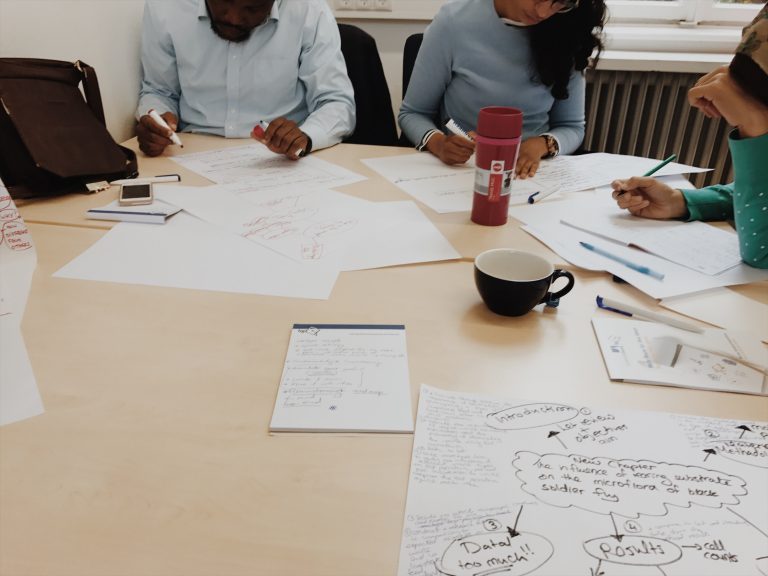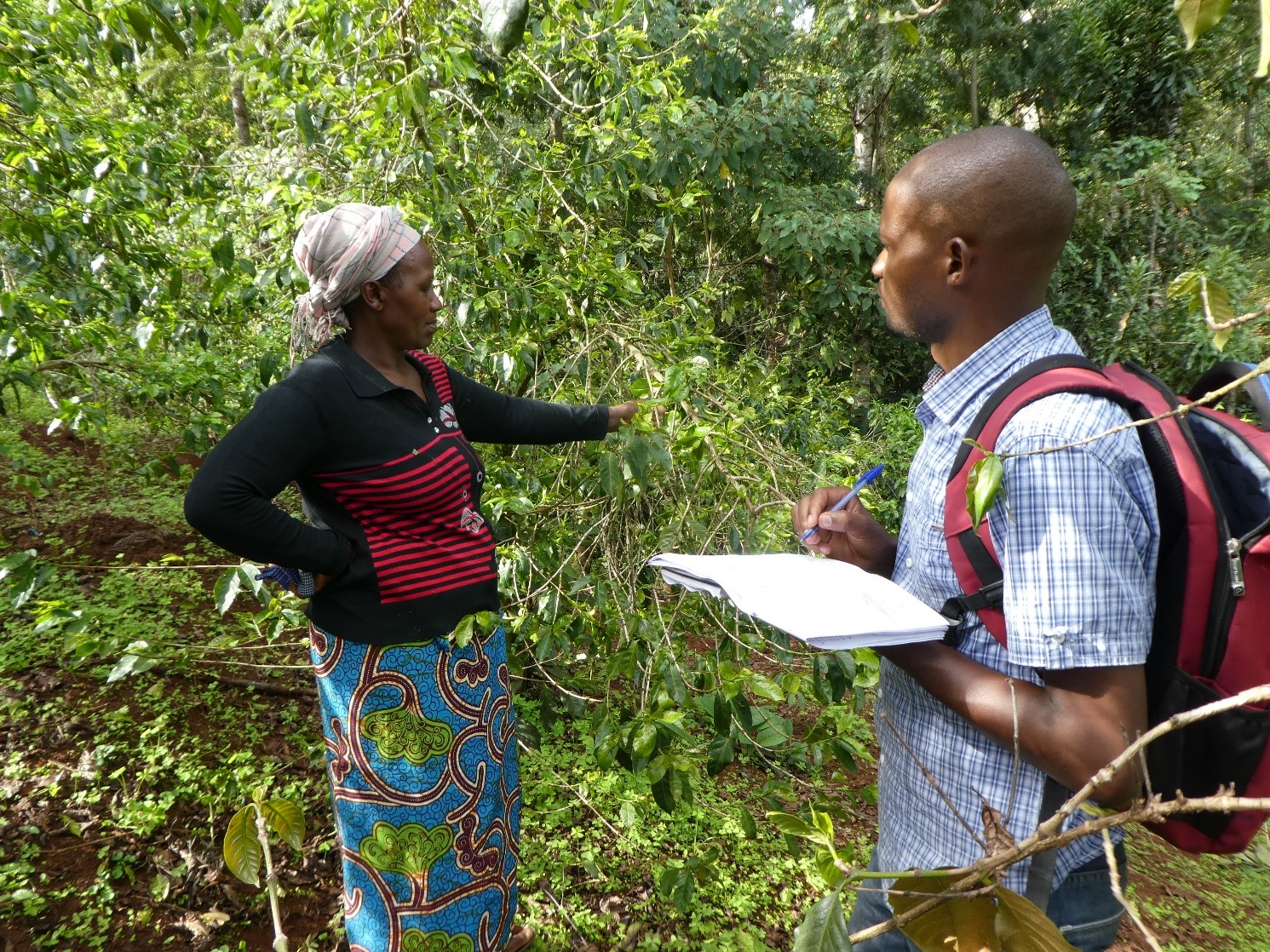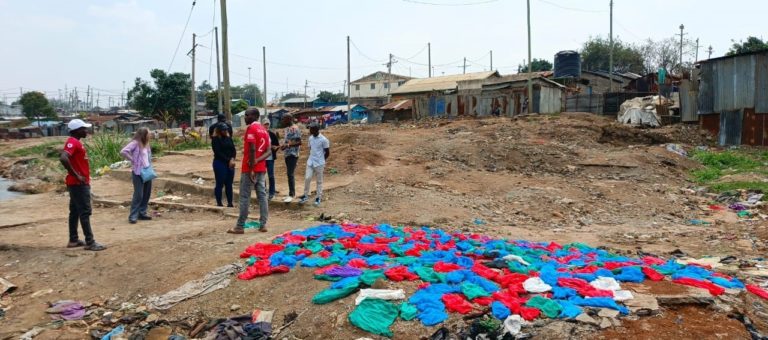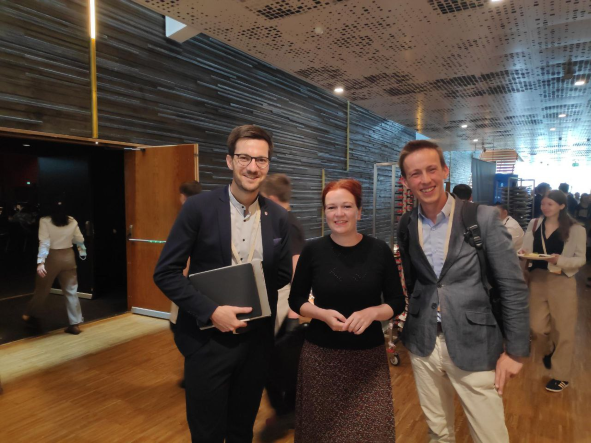Bridging the Gap: Gender and the environment – World Environment Day
This week, June 5, was World Environment Day. It was initiated by the United Nations Environment Programme (UNEP) in 1974 and it has grown to be the largest global platform for environmental outreach. World Environment Day 2022 was dedicated to the theme “Only One Earth”, whereas World Environment Day 2023 focuses on solutions to plastic pollution under the campaign #BeatPlasticPollution. In fact, every day of the year should be World Environment Day.
The environment it is often understood as ‘nature’, separated from humans or as the interactions between humans and their natural surroundings. Whatever definition of nature we may follow, we acknowledge that ‘gender’ is one of the most relevant categories of analysis in the inextricably interaction between humans and the ecosystems. This topic was discussed during an event organized by ZEF’s Gender Group on the occasion of last year’s World Environment Day.
Take-away messages from World Environment Day 2022
What did we take away from celebrating last-year’s World Environment Day? During a panel discussion organized by ZEF’s Gender Group on “Only One Earth: Perspectives on the Interlinkages between Gender and Environment” experts from Colombia (Samanta Arango, Amar Es Más), Cameroon (Stephanie Mvodo, University of Buea), Germany (Holger Kirscht, icipe) and India (Dr. Amrita Sen, Indian Institute of Technology Kharagpur) shared their experiences and perceptions of progress and setbacks in achieving a “One Earth” without gender-based obstacles. We define “One Earth” as a concept representing the vision of achieving a sustainable and interconnected planet where all beings can thrive through environmental stewardship and balance. This event on the occasion of World Environment Day 2022provided a deeper understanding of the crucial link between gender, equality, and the environment.
Only One Earth – and gender
The panelists highlighted the importance of addressing gender inequalities in various aspects of environmental action, including agriculture, climate change, environmental justice, and biodiversity conservation.
There were three overarching themes: 1. Empowering women’s voices in environmental decision-making, 2. Gender dynamics in environmental change, and 3. Gender-sensitive balancing of agricultural productivity and sustainability.
While celebrating this year’s World Environment Day, we reflect on these discussions about the link between gender equality and environmental action.
Theme 1: Empowering women’s voices in environmental decision-making
Dennis Avilés Irahola, a ZEF senior researcher and ZEF Gender Group co-founder emphasized in her keynote-address that women are more susceptible to the impact of environmental change than men. This is a significant concern that has been gaining attention by policy-makers and researchers. She also shared her observation that over the last years the notion of development has gradually shifted away from being human-centered. This shift underscores the growing understanding of the inseparable link between gender, the environment, and sustainable development. Referring to the latest report by the Intergovernmental Panel on Climate Change (IPCC), Dennis Avilés Irahola highlighted five critical areas of environmental research that intersect with gender issues: water insecurity, health, malnutrition, informal settlements, and the economy.
“In 2023 as much as in 2022, to face environment risks it is necessary to distinguish who does what and under what conditions, because everybody counts. This implies to amplify women’s voices in decision-making processes”.
Dennis Avilés Irahola
“We cannot have one group of people deciding on general solutions for everybody. Decisions need to factor in gender interlinkages with the environment because men and women have different social positions and access social, economic and physical resources differently”.
Stephanie Mvodo
Stephanie Mvodo, a lecturer and researcher with the Department of Agricultural Economics and Agribusiness at the University of Buea, Cameroon, described the challenges facing women farmers in Cameroon. She pointed out that national and local policymakers often fail to consult and include women, who play a significant role in implementing decisions, especially in the field of agriculture.
Mvodo stressed that measures and policies are often not gender-specific and fail to consider indigenous knowledge. It would be important to include gender-sensitive aspects in disaster preparedness and risk reduction approaches. She also highlighted that it is crucial to look at other interlinkages, such as rural-urban and young-old dynamics. Mvodo concluded her talk by advocating for “glocal” solutions, where decisions made at higher levels incorporate the needs of local communities, bridging information inequities.
Theme 2. Gender Dynamics in environmental change
Gathered experience and conducted research show that environment and environmental change have specific gender dynamics and affect women in particular.
“A linear focus on ecological restoration is incomplete unless we consider sociological, structural issues – such as gender inclusion”.
Amrita Sen
Amrita Sen, an assistant professor at the Department of Humanities and Social Sciences at the Indian Institute of Technology Kharagpur, India, provided research insights into the impact of climate change on women in India.
She called the current period the “Era of the Environmental Anthropocene”, emphasizing the historical importance of social relations in understanding environmental issues. Referring to the United Nations Water Action Decade, Sen underlined the gender-specific burden associated with the collection and distribution of water in rural India, which predominantly falls on women.
As a result, girls often drop out of school and face arduous journeys of 2.5 to 3 kilometers to access water sources. She stressed the importance of intersectionality, and urged the research community to consider the additional challenges faced by women from lower castes. Furthermore, she highlighted how environmental degradation exacerbates social exclusion, forming a complex nexus of interconnected issues. Sen highlighted that the environment extends beyond just trees and forests, encompassing urban spaces as well. She emphasized that cities are often designed by men, for men, and that intersectionality influences how women access and experience these public spaces. By recognizing and addressing these issues, we can create more inclusive and sustainable urban environments that cater to the needs and experiences of all individuals.
“Environmental action without gender equality is impossible. So this is something that organizations fighting for land access, food sovereignty, and political liberation need to address urgently”.
Samanta Arango
Samanta Arango, an anthropologist, activist, and communications coordinator at ‘Amar Es Más’ (NGO) working in Colombia, presented her work on the intersection of gender, environmental justice, and peacebuilding in Colombia. She emphasized the importance of including women’s voices and perspectives in environmental decision-making processes to achieve sustainable and just outcomes. During the panel discussion, she underscored the importance of decolonizing feminism and recognizing that patriarchy affects not only women but also humanity and nature at large. Samantha stressed the need to prioritize women, women’s rights, and the eradication of gender-based violence at the center of political struggles, particularly within environmental movements operating under fascist regimes. By highlighting these aspects, she advocated for a more inclusive and effective approach that addresses the intertwined challenges of gender inequality, environmental degradation, and oppressive power structures.
Theme 3. Gender-sensitive balancing of agricultural productivity and sustainability
While agricultural productivity, sustainability, and gender-sensitivity may initially appear as competing or incompatible goals, it is crucial for research to shift its focus towards finding ways to achieve a balance between these three aspects. Our panelist, Holger Kirscht, a social science and gender expert at the International Centre of Insect Physiology and Ecology (icipe), addressed this balance in his talk. He highlighted the need to recognize and address the gendered dimensions of biodiversity loss and the importance of empowering women as key agents of change in biodiversity conservation efforts.
“A transformative approach is needed to level gender-imbalances in a world that is increasingly concerned with balancing agricultural productivity with sustainability”.
Holger Kirscht
Kirscht stated that there is a delicate balance between enhancing agricultural productivity and promoting sustainability. Currently, disempowered women tend to utilize fewer resources, such as land, pesticides, and engage in less deforestation, adhering to traditional and less environmentally damaging agricultural practices.
Kirscht also noted that women’s awareness of health issues, such as those caused by the misuse of pesticides, could serve as a potential entry point for their empowerment. He therefore called for addressing various women and gender-related factors like information deficit, decision-making power, and access to assets.
Key challenges and best practices
The discussion and Q&A with the audience raised key challenges related to the implementation of gender-sensitive policies, the crucial need for increased awareness and education regarding gender and environmental issues, and the significance of women’s involvement in decision-making processes.
Also, a recollection of best practices emerged from the discussions. These included recognizing the value of cooperatives and the importance of listening to indigenous women to foster bottom-up solutions. Other, more structural issues, emphasized the significance of creating gender-inclusive urban environments, dispelling the notion of gender-neutral urban planning and instead focusing on enhancing accessibility for women, such as through improved access to public transportation.
A point of agreement was that women need to organize themselves and campaign collectively for gender equity to become and remain at the core of environmental discussions. This goes hand-in-hand with gender-sensitization programs with male policymakers to challenge biases and encourage self-reflection on the connection between gender and the environment.
Resumé
The perspectives from different countries revealed intricate connections between gender, the environment, and sustainable development. There are several vulnerabilities women face in different contexts and the importance of integrating gender considerations into environmental policies and practices to achieve sustainable and just outcomes. Addressing these interlinked issues requires a holistic approach that considers indigenous knowledge, tailors coping mechanisms to gender-specific needs, and ensures that decisions incorporate local perspectives. By recognizing these dynamics and striving for gender-sensitive, inclusive solutions, we can foster a more equitable and resilient world for all, ultimately moving closer to the vision of ‘One Earth’ without gender-based obstacles.
Sanjana Rajasekar (ZEF junior researcher), Subash Surendran Padmaja (ZEF junior researcher),
Marina Kovaleva (ZEF junior researcher), and Dennis Avilés-Irahola (ZEF senior researcher)





